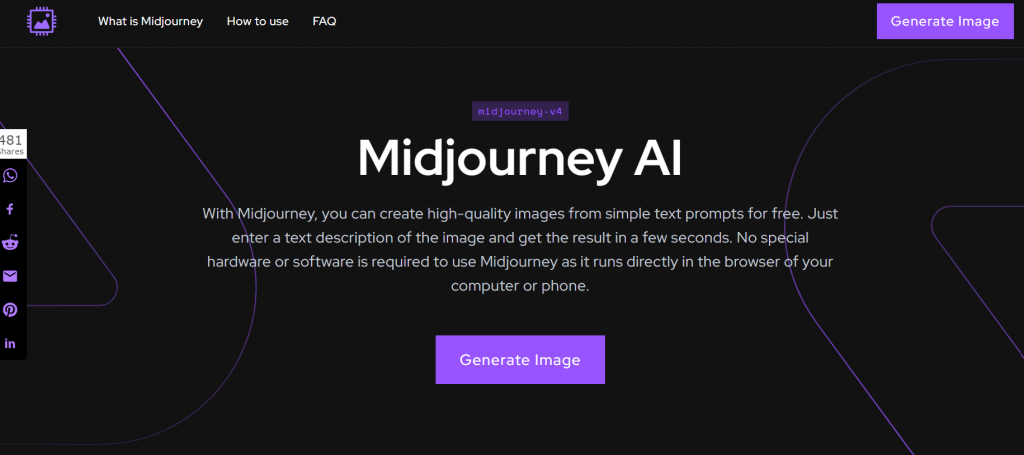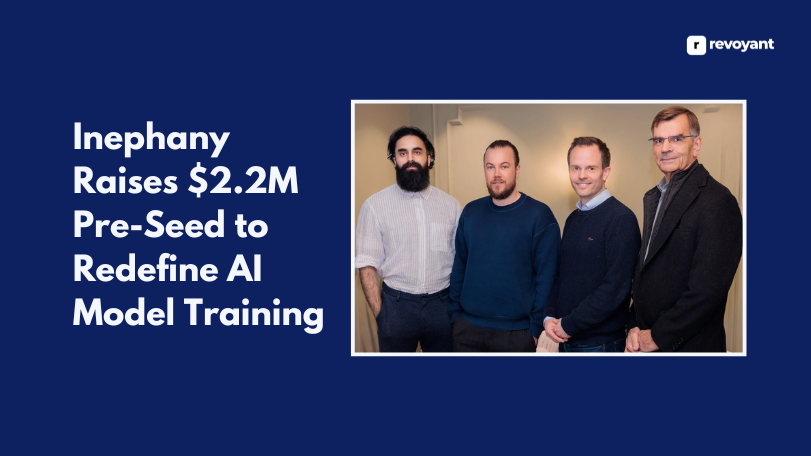AI product image generators deliver high-quality visuals quickly, helping businesses save both time and resources. In the digital age, captivating product images are more than just visuals—they are the first impression for customers exploring online stores, scrolling through social media, or browsing digital ads. Traditionally, creating these images required time, effort, and a significant investment in resources. However, AI product image generators are revolutionizing this process, offering businesses a faster, more efficient way to produce high-quality visuals at scale.
These innovative tools use artificial intelligence to generate realistic, professional-grade images tailored to specific needs. By mimicking details like textures, lighting, and angles, they provide a flexible solution for businesses of all sizes. From streamlining workflows to enabling large-scale content production, AI product image generators address modern challenges with unmatched speed and consistency.
But their value doesn’t stop there. These tools unlock creative possibilities, allowing businesses to customize images, experiment with unique styles, and personalize visuals for different audiences. As industries continue to adapt, AI product image generators promise to reshape how brands create, scale, and innovate in a visually driven world.
Key Takeaways
- AI product image generators create high-quality visuals in minutes, saving time and money for businesses of all sizes.
- These tools offer speed, scalability, and customization, producing over 100 images per hour and handling large-scale projects with ease.
- AI-driven firms report 50% higher revenue growth, with Meta seeing a 19% jump in revenue from AI-enhanced ads.
- By 2025, over 114 million AI-enabled PCs will be sold, a 165% increase year-over-year, showing the growing importance of AI tools in design and engineering.
- While AI generators face ethical and copyright challenges, experts like Dr. Samantha Chen suggest using them wisely and ethically to stay ahead in business.
Understanding AI Product Image Generators
AI product image generators leverage advanced artificial intelligence to create realistic, high-quality visuals that meet specific business needs. These tools utilize machine learning to replicate details such as lighting, textures, and perspectives, delivering professional-grade images that stand out. By automating the image creation process, they eliminate the time and resource demands of traditional methods, making them an efficient solution for businesses of all sizes.
These generators are versatile, catering to diverse industries, from small e-commerce stores to large-scale marketplaces. They enable businesses to bring products to life with visually appealing images that enhance customer engagement and drive conversions. Whether it’s creating consistent catalog images, experimenting with creative designs, or tailoring visuals to specific markets, AI product image generators provide flexibility and scalability.
As technology continues to advance, these tools are becoming essential for businesses looking to maintain a competitive edge in a world where compelling visuals are key to capturing attention and driving growth.
Exploring Key Features of AI Product Image Generators
AI product image generators bring remarkable capabilities to the table, offering unmatched speed and versatility. These tools deliver swift results, generating images almost instantaneously, making them a game-changer for businesses managing large-scale projects.
Enhancing Speed and Efficiency
AI product image generators are designed to work efficiently, producing high-quality images within seconds. This rapid performance allows businesses to save valuable time and resources. Tools like Recraft AI achieve quick generation times, comparable to well-known platforms such as Midjourney and Stable Diffusion.
Powered by machine learning, these tools translate text into images with precision. Their accuracy ensures that the output aligns closely with user prompts, minimizing the need for additional adjustments. This precision simplifies the image creation process, while features like Lasso Selection and Background Removal enhance editing convenience, enabling users to refine specific image elements effortlessly.
Beyond individual image creation, these generators are adept at managing extensive projects. They support large-scale endeavors, making them ideal for e-commerce platforms that require numerous product visuals and marketing teams developing diverse content. The ability to generate multiple image versions in a short time also aids in A/B testing for advertising campaigns.

Ensuring Scalability for Extensive Projects
AI product image generators excel at scaling for high-demand projects. Their capacity to produce thousands of images efficiently makes them a valuable asset for businesses with expanding needs. Whether creating large catalogs or supporting marketing campaigns, these tools maintain consistent quality while accommodating growing demands.
The scalability offered by AI generators allows organizations to increase production seamlessly, without the need for additional resources. As demand grows, these systems keep pace, empowering small teams to handle substantial image creation tasks. This capability is particularly beneficial for companies looking to enhance their visual content strategies as they scale.
Customizing and Controlling Style
Another standout feature of AI product image generators is their ability to provide extensive style control. Businesses can customize images to align perfectly with their brand identity by adjusting colors, textures, and overall design elements. This level of customization helps brands create unique and visually appealing content.
Platforms like Adobe Firefly and Midjourney offer advanced style options, allowing users to combine artistic influences or create entirely new aesthetics. These tools also adapt to user preferences over time, making future projects even more intuitive. With the option to save preferred styles, users can streamline their workflows and maintain consistent branding.
As a creative ally, AI amplifies artistic expression, providing a platform where ideas come to life with ease and precision.
Achieving High-Quality Image Resolution
Modern AI product image generators produce images with exceptional clarity and detail. Their outputs are lifelike and visually impressive, reflecting advancements in technology that prioritize user needs. From small social media visuals to large billboard graphics, these tools support a wide range of resolutions, including 4K and 8K formats.
This versatility ensures images look stunning across various screens and media. Tools like Recraft AI are recognized for their superior image quality, delivering outputs that accurately reflect user prompts. Additionally, integrated AI features in applications like Photoshop simplify the editing process, reducing the need for multiple software programs.
By merging creativity with technology, AI product image generators enable businesses to craft visually compelling content efficiently, meeting the demands of diverse platforms and audiences.
Advantages of AI Product Image Generators
AI product image generators have revolutionized the way businesses approach image creation, delivering faster results and significant cost savings.
Accelerating Time-to-Market
AI product image generators drastically reduce the time required to produce high-quality visuals. Instead of spending days or weeks on photo shoots and editing, businesses can create stunning product images in minutes. This efficiency allows companies to bring products to market more quickly than ever before.
These tools are especially beneficial for e-commerce businesses, enabling them to keep up with trends and introduce new products swiftly. By producing images rapidly, companies can also test product designs and gather customer feedback earlier in the process. This results in better products and improved customer satisfaction—all in record time.
Lowering Image Production Costs
AI image generators are an excellent solution for reducing the expenses associated with creating professional visuals. They minimize the need for traditional photo shoots, expensive equipment, and on-site resources. Businesses can now generate high-quality images at a fraction of the cost, making it a practical option for organizations of all sizes.
The impact of AI in this space is evident across industries. For example, Meta’s recent revenue growth demonstrated the value of AI-powered tools in enhancing marketing campaigns. Companies can leverage this technology to maximize their budget while achieving impressive results.
Offering Versatility Across Industries
One of the most impressive features of AI product image generators is their adaptability across various industries. In e-commerce, they produce realistic product visuals, leveling the playing field for small businesses. Marketing teams can quickly create compelling ad visuals, enhancing creativity and efficiency.
In product design, these tools simplify the creation of 3D models and prototypes, streamlining the design process. Real estate professionals use AI-generated images to showcase properties with customizable decor, helping potential buyers visualize possibilities. Even in healthcare, AI-generated visuals support treatment planning and patient education.
As the technology advances, its applications continue to expand, from video games and movies to virtual reality environments. With such wide-ranging capabilities, AI product image generators are becoming an indispensable tool across multiple fields. The next step is exploring how businesses can overcome challenges and make the most of this innovative technology.
Comparison Table for Top 5 AI Product Image Generators
| Tool | Key Features | Pricing | Ideal For |
|---|---|---|---|
| DALL-E 3 | Realistic images, integrates with ChatGPT and Bing Chat | $20/month or free via Bing Chat | Creative professionals |
| Midjourney | Artistic visuals, Discord-based | Starts at $10/month | Artists and designers |
| Stable Diffusion | Open-source, highly customizable | Free (resource costs apply) | Developers |
| Adobe Firefly | Seamless integration with Adobe tools | Requires Adobe Creative Cloud | Adobe users |
| DeepArt | Transforms photos into artistic styles | $2.99/month (iOS), $9.90/month (desktop) | Art enthusiasts |
Practical Uses of AI Product Image Generators
AI product image generators are transforming industries by enhancing efficiency, creativity, and innovation. Their applications go far beyond e-commerce, extending into marketing, product design, and beyond.
Enhancing E-commerce and Product Catalogs
AI product image generators are making a significant impact on e-commerce. They enable businesses to create product visuals efficiently and affordably. For instance, companies like Amazon are leveraging AI to produce advertisement images that increase engagement. This technology allows online stores to showcase a wide variety of products without the need for traditional photo shoots.
Small businesses benefit greatly from these tools, as they can produce professional-quality images with fewer resources. AI also enhances product catalogs by generating variations of items, such as different colors or styles. This helps shoppers visualize their choices, creating an experience similar to browsing a virtual showroom.
Moreover, AI can produce lifestyle images, integrating products into real-world settings. This makes catalogs more appealing and helps customers imagine how products fit into their lives.
Boosting Marketing Campaigns and Advertisements
In marketing, AI product image generators are streamlining the creation of visually engaging content. These tools allow marketers to produce custom visuals for ads, social media, and websites in just seconds. By reducing the need for extensive design work, brands can focus on creativity and strategy.
The ability to test multiple ideas quickly is a game-changer. Businesses can identify what resonates most with their audience and refine campaigns accordingly. Companies like Meta have seen the benefits of AI-enhanced advertising, reporting substantial increases in revenue and engagement.
AI-generated visuals also enable personalized advertising, making content more relevant to individual viewers. This tailored approach enhances customer connections and helps brands stand out in a competitive digital space.
Innovating in Prototyping and Product Design
AI image generators are transforming prototyping and product design by accelerating workflows and opening up new possibilities. Designers can create detailed mock-ups and realistic 3D models in minutes, allowing them to test concepts quickly and efficiently.
This technology simplifies the process of visualizing ideas, reducing the need for physical prototypes. Design teams can explore multiple options and gather valuable feedback earlier in the development process. This fosters innovation and streamlines the journey from concept to final product.
The rapid growth of AI-powered tools reflects their growing importance. By 2025, the market for AI-enabled devices is projected to expand significantly, highlighting their value in design and engineering. With these tools, designers and innovators can bring ideas to life faster and more effectively than ever before.
AI product image generators continue to inspire creativity and efficiency, empowering businesses to achieve more across diverse fields.
Recognizing Challenges and Opportunities in AI Product Image Generators
AI product image generators are powerful tools, but their use comes with important considerations. From ethical questions to technical requirements, understanding these challenges helps unlock their full potential.
Addressing Ethical Considerations and Copyright Clarity
AI-generated images introduce questions about ownership and usage rights. The distinction between who owns AI-created visuals can be complex, emphasizing the importance of establishing clear guidelines for ethical and legal use. Organizations that prioritize respecting copyrights and ensuring proper use are setting a strong foundation for responsible AI adoption.
Rather than replacing creativity, AI tools can serve as a complementary resource for artists and designers, enhancing workflows and opening new possibilities. Responsible use of these tools also includes checking image sources, securing permissions, and ensuring fairness in AI-generated outputs. By training teams on ethical practices and crafting thoughtful guidelines, businesses can use AI image generation responsibly while fostering innovation.
Ensuring Quality Inputs for Superior Outputs
The quality of images created by AI largely depends on the inputs it receives. Clear and specific prompts are essential for generating accurate and visually appealing results. Users who develop precise instructions can guide the AI more effectively, enabling the creation of tailored visuals.
Additionally, the AI’s training data plays a key role in determining output quality. Systems trained on high-quality datasets are better equipped to deliver professional results. Many tools now allow users to upload their own images for fine-tuning, enabling customized visuals that align with brand identities and creative goals.
By refining their inputs and leveraging advanced features, users can maximize the potential of AI image generators and consistently achieve outstanding results.
Exploring the Future of AI Product Image Generators
The future of AI product image generation is full of exciting possibilities. Advances in integration, personalization, and real-time editing are paving the way for tools that are more intuitive, efficient, and creative.
Integrating with Multimodal AI Systems
AI image generators are becoming more versatile by integrating with systems that handle text, speech, and other media. This opens the door to tools capable of processing multiple formats in a unified workflow. For instance, a user could describe a product idea verbally, and the system would instantly generate a visual representation.
These multimodal capabilities have the potential to transform industries like design, marketing, and entertainment by making content creation faster and more dynamic. As these systems evolve, they will empower users to combine multiple AI functionalities seamlessly.
Enhancing Personalization Capabilities
AI tools are becoming increasingly adept at tailoring outputs to individual preferences. By learning from prior user activity, these systems can create visuals that reflect personal styles and preferences.
Whether it’s selecting favorite colors, shapes, or themes, AI tools are set to deliver a more personalized experience. They may also integrate with other AI systems, such as chatbots or social media analysis, to create images that align with specific tastes or trends. This level of customization promises to streamline workflows and enhance creative expression.
Advancing Real-Time Editing Features
Real-time editing features are transforming how users interact with AI-generated images. The ability to make instant adjustments eliminates the need for extended editing processes, enabling quicker fine-tuning and improved results.
Innovative tools like Recraft AI are setting new standards by incorporating editing features such as background removal directly into their platforms. This integration simplifies workflows and enhances efficiency, making professional-grade image editing accessible to all users.
As real-time editing capabilities continue to improve, users can expect even greater flexibility and control over their creative projects.
Conclusion
AI product image generators are redefining how businesses create and use visuals, offering unmatched speed, scalability, and creativity. These tools empower companies to produce high-quality images quickly and efficiently, meeting the demands of fast-paced industries like e-commerce, marketing, and design.
Their ability to personalize outputs, streamline workflows, and integrate with other AI systems makes them invaluable across various fields. As the technology continues to evolve, it is poised to unlock even more innovative applications, enhancing how businesses and creators bring their ideas to life.
AI product image generators represent a future where creativity and efficiency go hand in hand, providing endless opportunities to innovate and thrive in a visually driven world.
Frequently Asked Questions
How do AI product image generators work?
AI product image generators use advanced algorithms and deep learning models to create visuals based on text prompts, image inputs, or predefined templates. These tools analyze the input data to produce high-quality images that meet specific requirements, such as style, format, or design preferences.
What industries benefit most from AI product image generators?
These tools are widely used in e-commerce, marketing, design, real estate, and entertainment. They help businesses create product images, advertisements, prototypes, and lifestyle visuals quickly and efficiently, making them valuable across a range of sectors.
Can AI image generators create customized visuals?
Yes, AI image generators can create highly customized visuals. Users can refine outputs by providing specific prompts, uploading reference images, or adjusting settings. Many tools also learn from past interactions to tailor future outputs to individual preferences or brand styles.
Are AI-generated images copyright-protected?
Copyright ownership of AI-generated images depends on the tool’s policies and local regulations. Businesses should review the terms of use for the software they choose and establish clear guidelines to ensure legal compliance and proper attribution where required.
How can businesses ensure quality and consistency in AI-generated images?
To achieve consistent and high-quality results, businesses should use precise and detailed prompts, rely on tools with robust training data, and take advantage of features like custom image uploads or brand-specific templates. Regularly refining inputs and understanding the tool’s capabilities are key to maximizing output quality.



